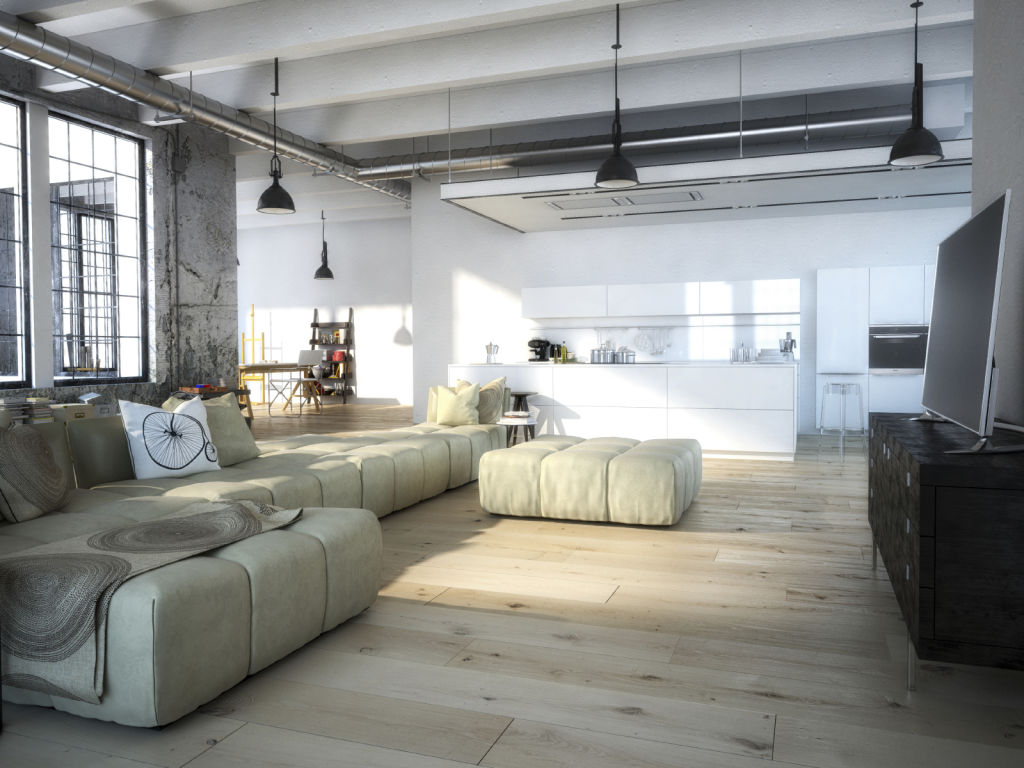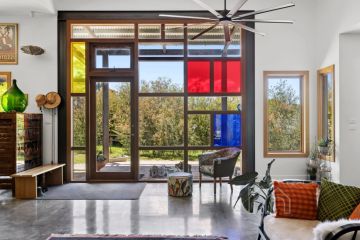How to make a warehouse homely

Create space, not emptiness
One of the most attractive features of warehouses are their high ceilings, but sometimes, when converted to a house, high ceilings can make the home look empty rather than spacious. Pendant lights help add warmth to a living and dining area by making the ceiling appear lower than it actually is, while still maintaining height.
Warehouses can also appear empty simply because they often are vast, in terms of area. Rather than buying multiple pieces of furniture to take up space, a few strategically placed, patterned rugs can work wonders in making your home look cosy, yet spacious. Creating zones in your home will make the open plan design more functional and liveable.
Utilise pops of colour
Nothing makes a warehouse look less homely than when the colour palette is non-existent. The right colour palette can really help bring your space together, making it seem more like a home and less like a furniture exhibition in an industrial space.
With an abundance of natural light and beautiful reddish and brown tones, plants are an easy way to bring colour into your converted warehouse in a stylish way. It’s also easy to bring your apartment to life by using colourful cushions and wall prints, with complementing colours on your pendant lights, or by including a floor-to-ceiling bookshelf with a rainbow of beautiful books.
Go easy on the exposed brick
Exposed brick is great for that industrial chic look, but too much of it can make your home feel like… well, a warehouse. To mitigate this, keep the brick limited to one feature wall and then allow it to peek out through other locations in your home, such as the back of your bookshelf or above a window.
If you don’t want to get rid of the brick completely, painting over the walls with white paint can make for a stylish yet homely look.
Before you buy…
As opposed to when buying a house, some warehouses are simply inhospitable for families, so it’s critical you do your research before signing any paperwork. Ensure you check plumbing options and the building’s foundations, as well as to see if there is any lead paint or asbestos lurking around.
If you decide to purchase the property, come up with a preliminary floor plan. It will help you think carefully about where you want to position the rooms in the house, and whether the warehouse’s existing layout will complement that. And, of course, make sure you add a buffer to your budget to prevent your conversion from blowing way over.
It turns out that creating warmth and a homely feel in a converted warehouse space is not as hard as you may think. For more tips on turning your warehouse into your dream home, visit our Renovating blog.
We recommend
We thought you might like
States
Capital Cities
Capital Cities - Rentals
Popular Areas
Allhomes
More
- © 2025, CoStar Group Inc.







